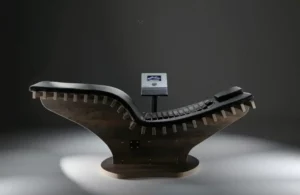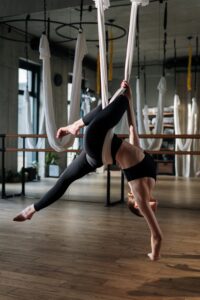reLounge Therapy Protocol: An independent 8-week case report based on professional athletes
Back pain is a prevalent problem in today’s society that affects people of all ages and can have far-reaching consequences on daily life. Decreased productivity, athletic performance, and increased healthcare burden are just some of the problems that stem from back pain. The factors that contribute to back pain are numerous and can include age, weight gain, fitness level, and heredity. While some back pain may be caused by an acute injury, chronic pain can develop over time due to poor posture, repetitive movements, or underlying medical conditions.
Conservative Treatments for Back Pain
As one of the leading causes of disability and missed workdays, back pain treatment is complex and time-consuming. Conservative treatment options such as physiotherapy, which includes traction, electrotherapy, and therapeutic exercises, can help alleviate symptoms and improve mobility. However, these treatments can be physically demanding for patients and may not be effective for everyone.
The Promise of Innovative Therapy

In recent years, innovative technology has emerged as a promising treatment option for managing both acute and chronic back pain. At the forefront is reLounge, a unique and innovative technology that has been developed to provide relief for back pain. The combination of cutting-edge therapies allows it to be highly effective in treating the root cause of back pain.
One of the key advantages of reLounge is that it is less physically demanding than other forms of treatment, such as physiotherapy. This makes it an excellent option for patients who may have limited mobility or who are unable to participate in traditional forms of therapy.
Revolutionising Back Pain Treatment
As an athlete, back pain can be a major hindrance to performance and quality of life. It can limit the range of motion, cause pain and discomfort, and even prevent athletes from participating in their chosen sport. Fortunately, there is a new therapy approach that has been proven to be highly effective in treating back pain in athletes. In an independent 8-week testimonial based on 5 professional athletes, this therapy protocol has been shown to be highly effective in treating back pain and improving range of motion.
reLounge Therapy Protocol

To evaluate the effectiveness of the reLounge, a case report has been conducted, involving participants with an average age of 30.4 years who had experienced various types of back pain. All participants were required to complete a questionnaire before beginning the 8-week therapy, which included questions based on their pain and stress levels. The therapy protocol consisted of two 20-minute sessions per week of three different types of therapy: Combined Muscle Stimulation Total (CMST), Chronic/Acute Pain Total HAN, and Comfort Wave (CW).
To measure the improvements, the participants underwent a testing protocol that included the Stand & Reach Test, which measured their range of motion by having them stand on a box and reach as far down as possible without bending their knees. The distance measured in centimeters was taken from the tip of the middle finger to the ground.
Found this useful?
Significant results: Decreased Pain, Improved Range of Motion
After completing the 8-week therapy protocol, all athletes reported a significant decrease in pain symptoms and an improvement in range of motion. On average, the athletes demonstrated a 35% improvement in their range of motion as measured by the Stand & Reach Test, indicating an improvement in mobility. Additionally, there was an average 50% improvement in pain symptoms as measured by the Visual Analog Scale (VAS). These results are remarkable and provide hope for athletes struggling with back pain.

Individual results
Participant 1
A 27-year-old female elite acrobat, gymnast, and high diver who has been performing and competing at a professional level for over 10 years. Her area of concern is chronic (12 weeks +) cervical, thoracic, and lumbar pain, causing her restriction in movement and limitations in performance. After 8 weeks of therapy, she showed a 25% improvement in the Stand & Reach Test and an improvement of 57 % in pain symptoms as measured by the Visual Analog Scale (VAS).

Participant 2
A 34-year-old male professional motorcycle stunt rider specializing in ‘globe of death’ performance. He suffers from chronic lower back pain (16 weeks +) as well as L4/L5 disc bulge with occasional right leg neurological symptoms, causing missed work days as well as limitation in performance ability. After 8 weeks of therapy, he showed a 31% improvement in the Stand & Reach Test and an improvement of 40 % in pain symptoms as measured by the Visual Analog Scale (VAS).

Participant 3
A 31-year-old male professional acrobatic specializing as a ‘Porter’ as well as CrossFit enthusiast. He suffers from subacute lumbar pain (8 weeks +) that prevents him from performing consistently and to the maximum of his capabilities. After 8 weeks of therapy, he showed a 38% improvement in the Stand & Reach Test and an improvement of 29 % in pain symptoms as measured by the Visual Analog Scale (VAS).

Participant 4
A 25-year-old male professional acrobat specializing as a ‘Porter’ – a particular area of acrobatics that requires repetitive explosive lifts, throws, and hand balancing of loads ranging from 45kg to 60kg. Participant 4 had acute (3 weeks +) cervical and lumbar pain, causing limitations on range of motion, performance, and time away from work. After 8 weeks of therapy, he showed a 12% improvement in the Stand & Reach Test and an improvement of 62.5 % in pain symptoms as measured by the Visual Analog Scale (VAS).

Participant 5
A 35-year-old male professional motorcycle stunt rider specializing in ‘glove of death’ performance and boxing enthusiast. He has been suffering from chronic (12 weeks +) cervical and lumbar pain, causing restriction in range of motion and performance limitations. After 8 weeks of therapy, he showed a 26% improvement in the Stand & Reach Test and an improvement of 57 % in pain symptoms as measured by the Visual Analog Scale (VAS).

These findings are significant as they allow for better management of athlete injuries and facilitate time management when dealing with back injuries that require a prolonged therapeutic strategy. The addition of reLounge technology allows for better monitoring of symptoms through its back scanning technology, which provides objective data when tracking progress, allowing for a more guided approach.
The Future of Back Pain Treatments
These results demonstrate that reLounge technology is an effective tool for decreasing pain symptoms and improving range of motion for athletes suffering from back pain. By utilising innovative technology, athletes can experience improved mobility and reduced pain, leading to a better quality of life.
Conclusion
Back pain is a common problem that can impact an athlete’s performance significantly. However, with the emergence of innovative technology like reLounge, managing back pain has become easier than ever before. The results of the case report demonstrate the effectiveness of the reLounge Therapy Protocol in treating back pain in athletes.
Following the 8-week intervention protocol with reLounge technology, pain symptoms (VAS) were shown to decrease significantly with all subjects reporting a lower VAS during the post-intervention questionnaire when compared to the pre-intervention reports. Range of motion was also shown to improve in all subjects when comparing the pre-intervention scores with the post-intervention scores when performing the Stand & Reach Test.
In conclusion, the reLounge is an effective tool for decreasing pain symptoms and improving range of motion for athletes suffering from back pain. Whether you’re an elite athlete or a recreational sports enthusiast, the reLounge can help you overcome back pain and achieve your athletic goals.
Found this useful?
FAQs
What is reLounge?
reLounge is the combination of the StimaWell stimulation mat and a specifically designed wooden lounger.
It combines the four most proven methods to treat back pain (pain therapy, muscle building and strengthening, heat and massage) into one system. Click here for more information.
What is the reLounge Therapy Protocol?
The reLounge Therapy Protocol is a specifically used therapy protocol in the case report, consisting of two 20-minute sessions per week of three different types of therapy: Combined Muscle Stimulation Total (CMST), Chronic/Acute Pain Total HAN, and Comfort Wave (CW).
What is the Stand & Reach Test?
The Stand & Reach Test measures range of motion by having the participant stand on a box and reach as far down as possible without bending their knees. The distance measured in centimeters is taken from the tip of the middle finger to the ground.
How long does it take to see results with the reLounge Therapy Protocol?
Participants in the case report showed significant improvements after just 8 weeks of therapy. However, individual results may vary.
Can the reLounge Therapy Protocol be used for other types of pain?
While the reLounge Therapy Protocol in this case was specifically designed for back pain in athletes, it may be effective for other types of back pain as well. It is recommended to consult with a healthcare professional before starting any new therapy.
Follow Us for More
If you’ve found our blog post helpful, we have got more information and tips to share on our socials. Follow us and get access to even more helpful information on how to relieve and prevent back pain, as well as other health-related topics.




